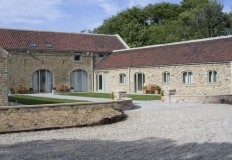Bempton Cliffs - Seabird City
Every year from March to October Bempton Cliffs holds over 200,000 breeding seabirds. Gannets, Puffins, Kittiwakes and Guillemots take to the cliffs to nest on the ledges of the 400ft white chalk cliffs.
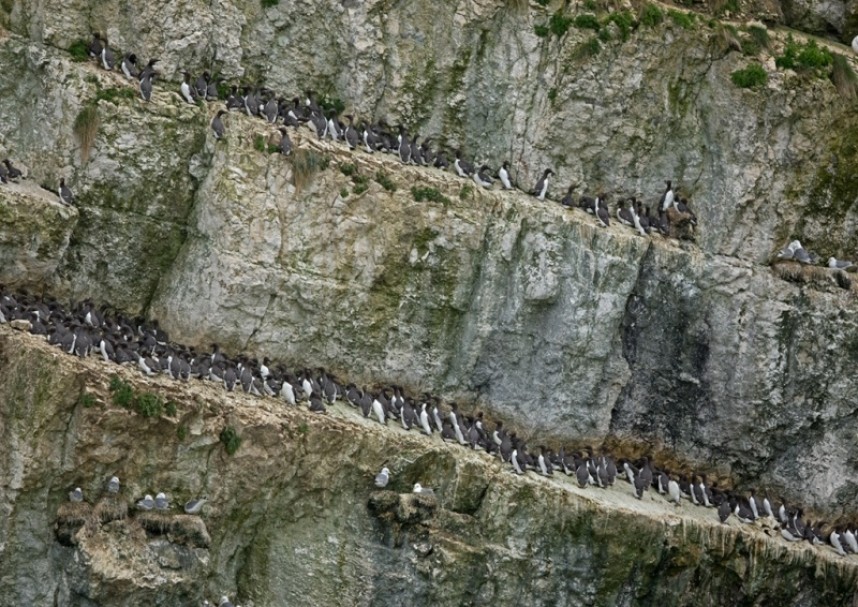
Guillemots - Steve Race ©
This amazing wildlife spectacle is not only a visual delight but the sound and smells make this place a true 'Seabird City'. I am so lucky in the fact that this special place is only a 30 minute drive from my home and the only mainland seabird colony in England. There are eight key species of seabird inhabiting the cliff face through the spring and summer months: Gannet, Puffin, Kittiwake, Razorbill, Guillemot, Fulmar, Herring Gull and Shag. My favourite of the 'Big 8' is the Gannet. There are just over 11,000 breeding pairs at Bempton and they start to arrive back on the cliffs from early February onwards.
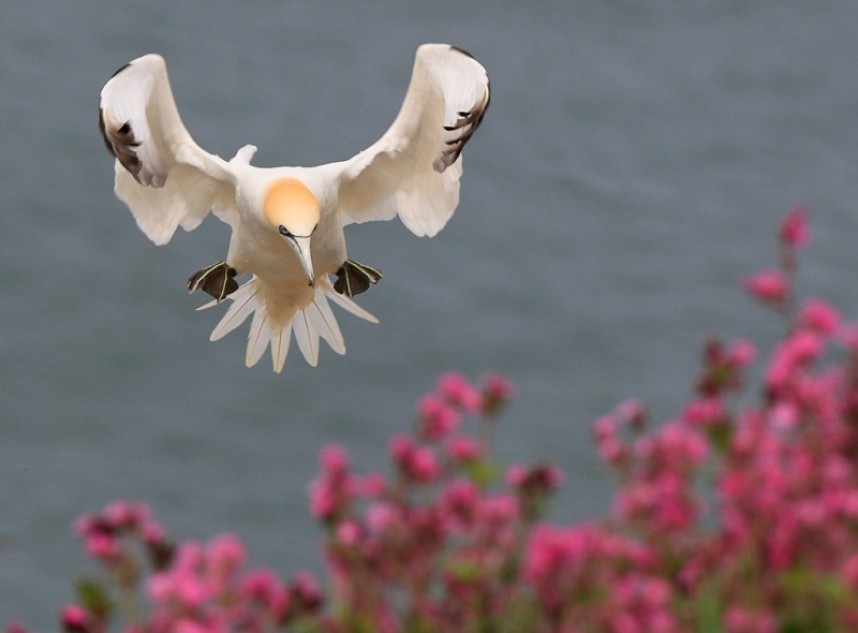
Gannet - Steve Race ©
Our Gannet is actually the Northern Gannet which migrates to Bempton each season from West Africa. To me they are truly special birds in that they pair for life and return to the same nest site each year. They seem to have a perfect bond and are always very affectionate to each other. Having said that they can be very aggresive towards other pairs, especially when an intruder tries to take over a nest site. The image below shows an argument between two Gannets fighting over a potential nest site.
I have watched Gannets at Bempton Cliffs for many years now and occasionally I have witnessed some interesting behaviour. Recently I saw a male Gannet offer a female the ultimate 'love gift' of a necklace of Red Campion flowers - now you don't see that every day! The Gannet is our largest seabird with a wing span of 2 metres. They are incredible flyers and are best viewed up close on a strong easterly wind which pushes these birds up to cliff top level. In the month of May the cliff tops are a blanket of pink with Red Campion flowers extending along the 5.5km reserve which is run by the RSPB.
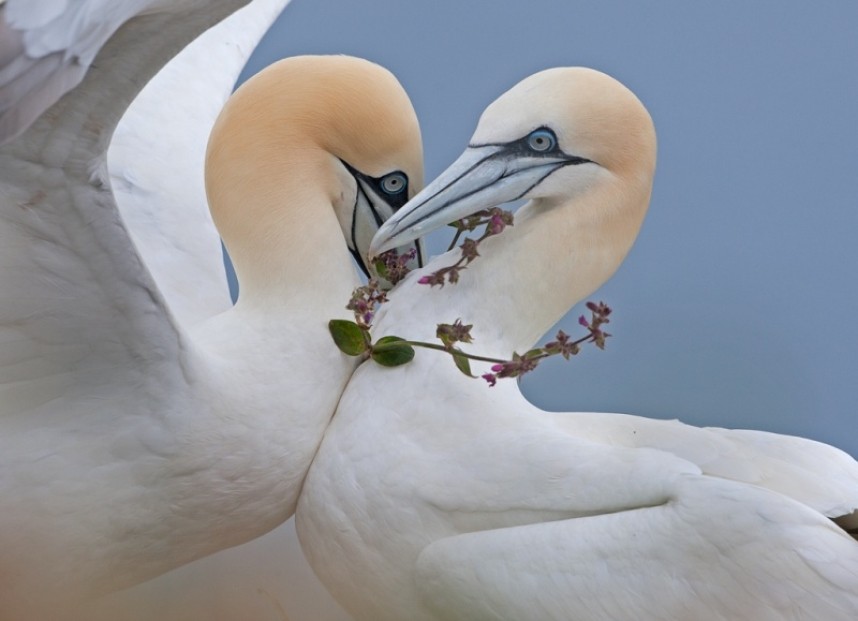
Gannets - Steve Race ©
Sometimes I wonder how Gannets land on the cliff ledges, being such a big bird with long wings and huge webbed feet. I love seeing them coming in to land, folding in their wings, extending their tail feathers and pushing out those webbed feet to eventually dump themselves on to their nest site.
Another incredible sight you may witness is the departure of thousands of Gannets leaving the ledges to go out on a fishing trip. They can cover great distances for provision and can easily travel 300km on a round trip. It is a very rare sight to see them diving for food close to the cliffs - they prefer to eat the bigger fish such as Cod, Mackerel and Herring which are found futher away from the coast in deeper waters.
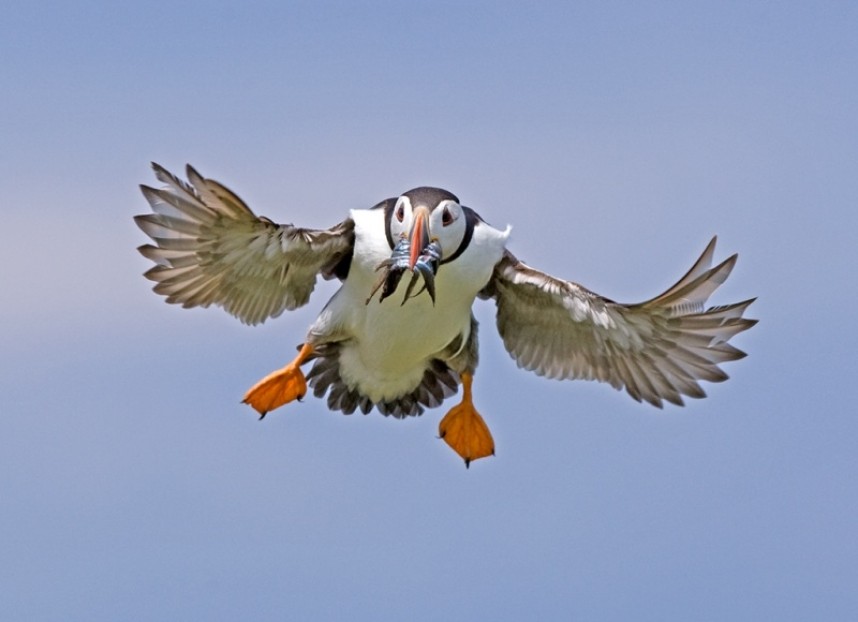
Puffin - Steve Race ©
Puffins are another one of the key species found on the cliffs. They are known to nest in burrows in other seabird colonies but because of the hard white chalk cliffs at Bempton they nest in the cracks, crevices and holes in the cliff face. I love to watch the Puffins dive off the ledges to take flight down to the sea below, they are the Tom Daley of the colony.
When you look closely at the Puffin's headdress with that rainbow-coloured beak, yellow gape and red around the eye they are beautiful birds. I can see now why some books have called them 'Sea Parrot' or 'Clown of the Seas'. In fact all this colour is just for courtship and in the winter months they turn monochrome.
The Puffin is a member of the auk family which includes Guillemot and Razorbill. There are thousands of the latter two species on the cliffs at Bempton. You can also find the Guillemot morph commonly known as 'Bridled' or 'Spectacled'. Identified by the white spectacle around its eye and white line along the indented furrow behind the eye, this is my favourite.
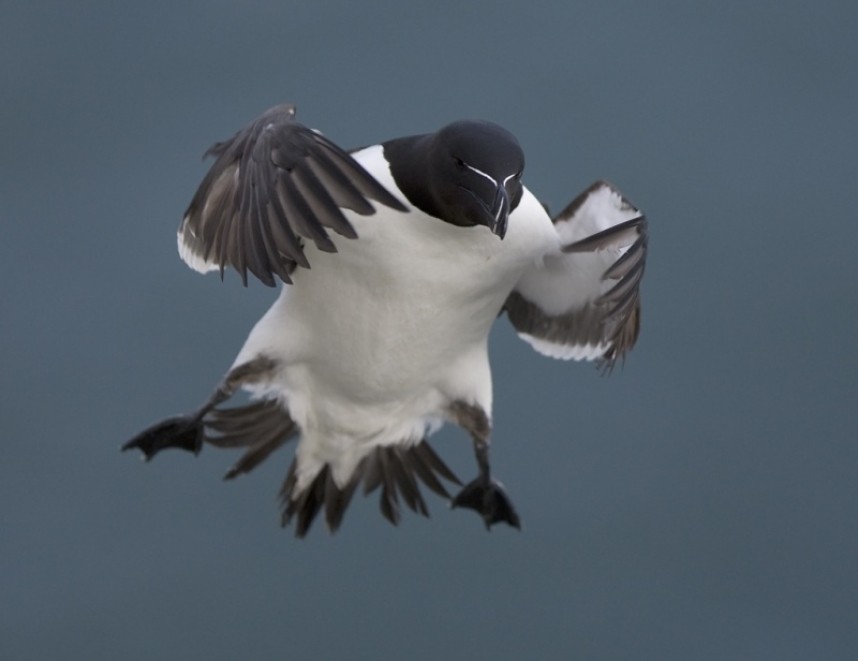
Razorbill - Steve Race ©
All the members of the auk family are fairly small in size and are very fast fliers. Razorbills always give me a giggle when I see them flying towards the cliffs as they look like they are coming in at about 100mph before they extend their small wings and feet to crash-land on the ledges.
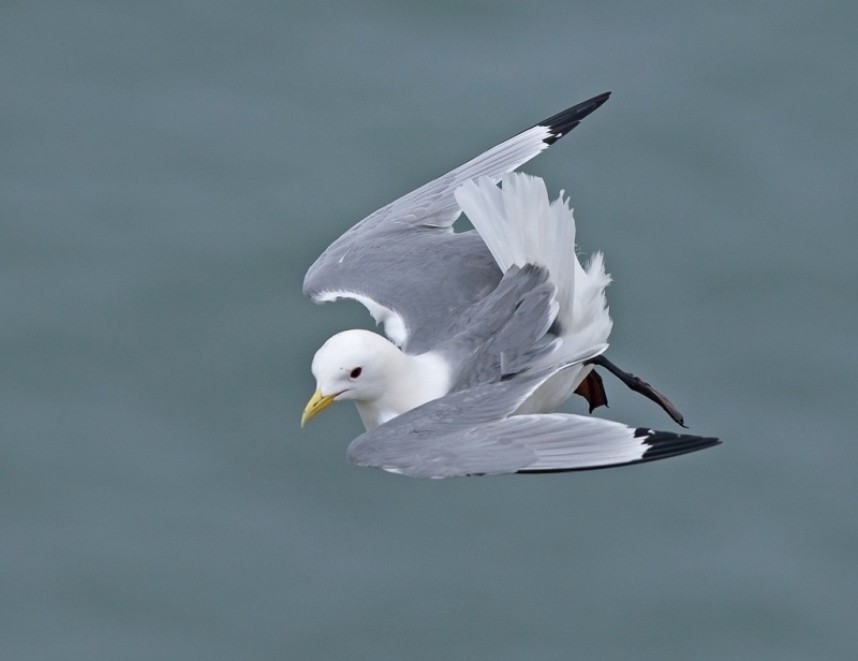
Kittiwake - Steve Race ©
I have already mentioned wind direction at Bempton Cliffs; this is a very important factor in really seeing seabirds up close and personal. The Kittiwake is our smallest gull and travels to Bempton from the high Arctic. When the winds are high these birds are incredible acrobats of the air, twisting and turning as they call out for a potential breeding partner.
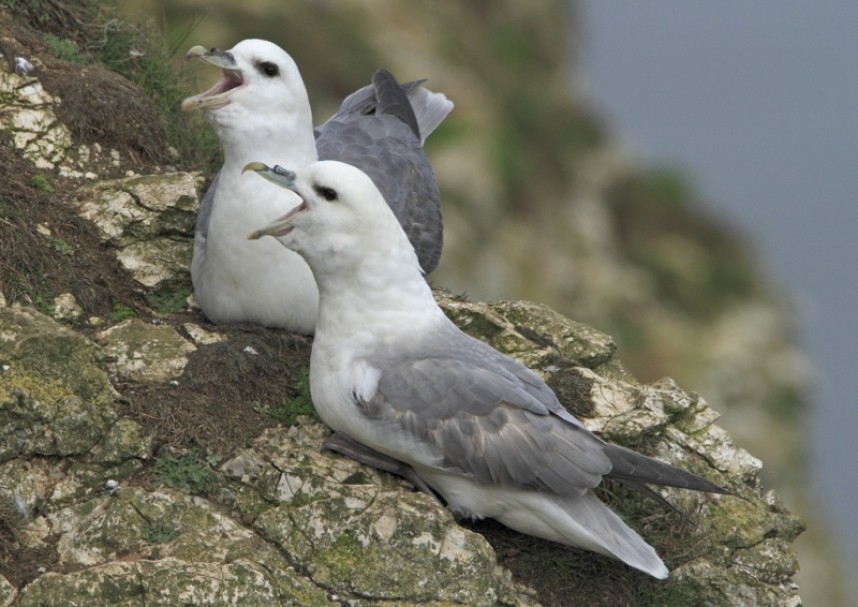
Fulmars - Steve Race ©
One species of seabird at Bempton that seems to get overlooked is the stunning Fulmar. Related to the Albatross with its long grey wings and tubenose bill, it can be found nesting at the top of the cliff where the grass meets the chalk. In flight the Fulmar seems hardly ever to flap its wings, just majestically gliding along the top of the cliffs at eye level.
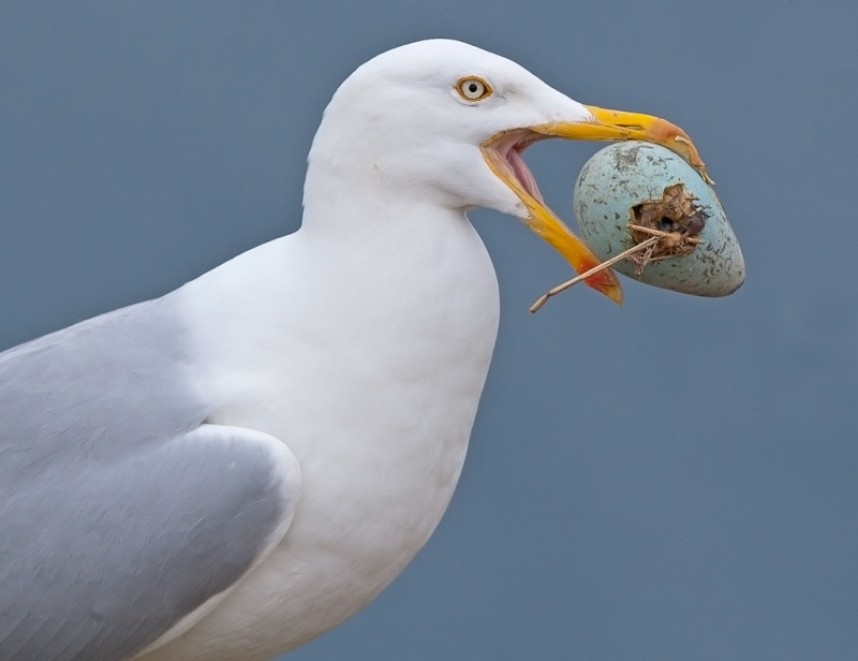
Herring Gull - Steve Race ©
There are not many predators at Bempton that affect the seabird population. You can occasionally see the odd Stoat or Weasel stealing a chick or two from the ledges at the top of the cliff face, but the main predators are Herring Gulls which also breed in the colony. They mainly take Guillemot eggs but I have witnessed them predating their own species.
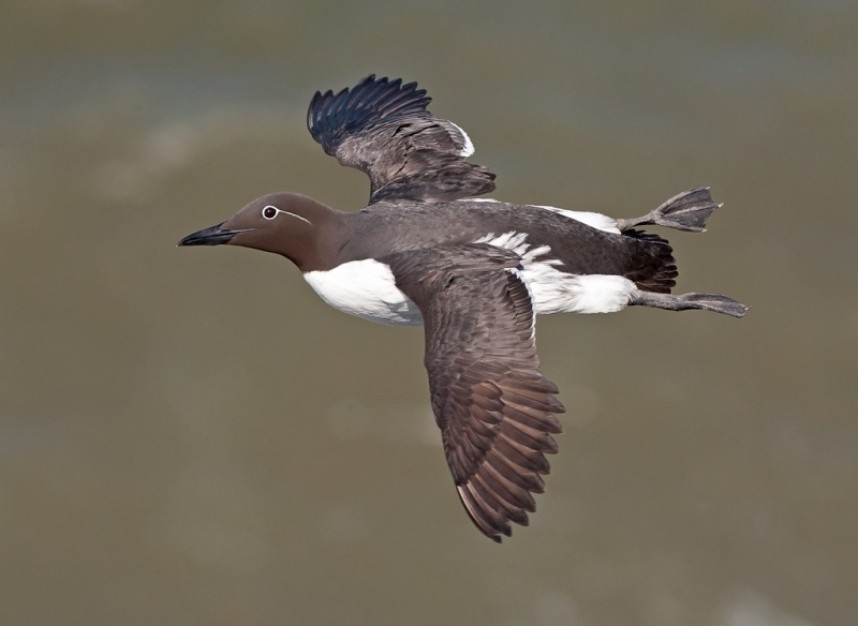
Bridled Guillemot - Steve Race ©
The seabirds are very well protected on land by the RSPB but you can't stop nature taking its course. Climate change has taken an impact on some species, as well as pollution and over-fishing; renewable energy installations have also taken their toll. If you haven't had the experience of visiting Bempton Cliffs then I truly recommend you take a look; you will not be disappointed. OK, I am a little biased as it is my 'local patch' but it's not every day you get to witness a TRUE wildlife spectacle.
We are running a series of Photography Workshops and boat trips from April to September. Please click on the links below for more details or to book a place:
Above and Below - Seabird Photography Boat Trips
RSPB Seabird Photography Workshops



 Back to Blog
Back to Blog

